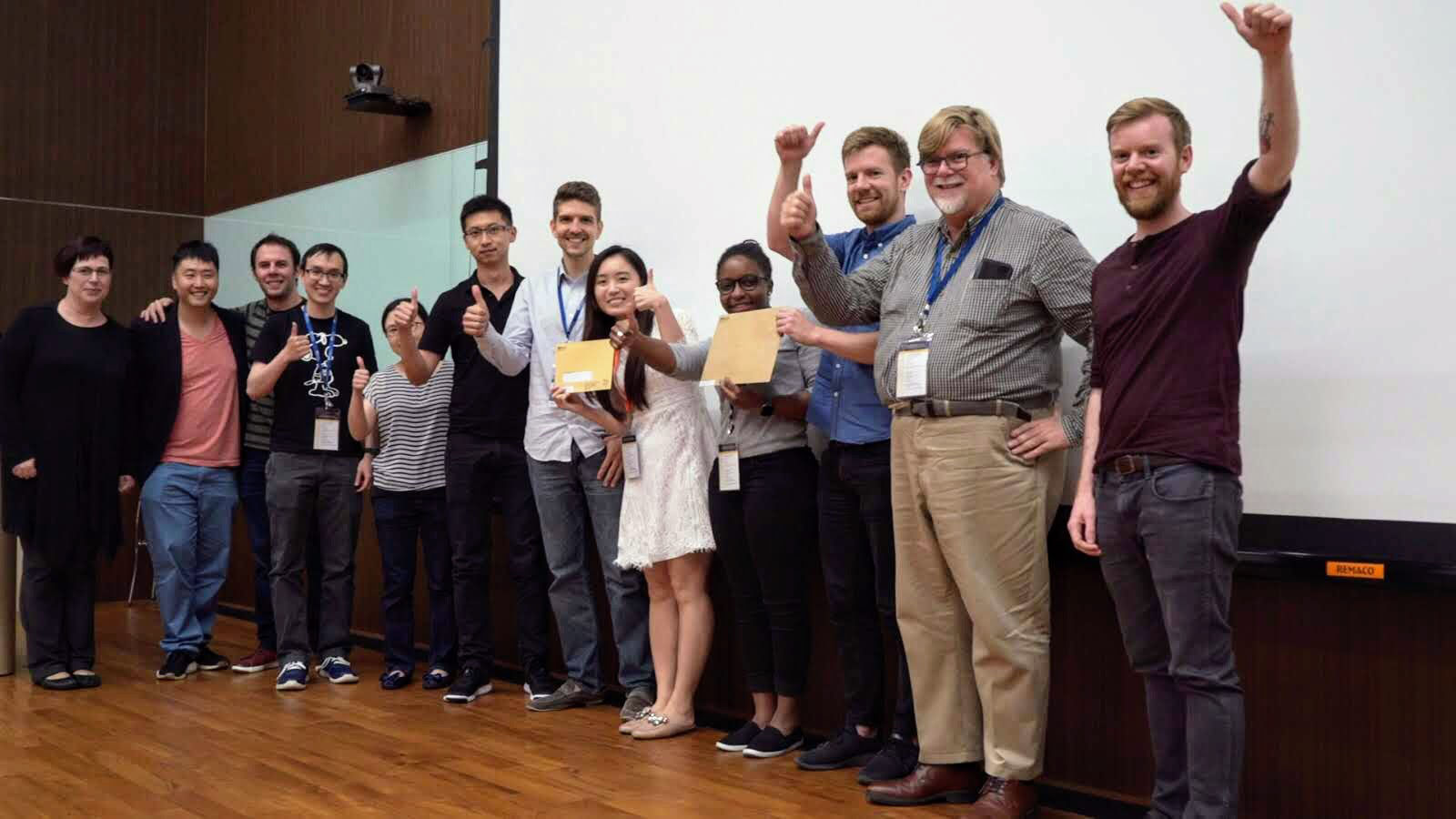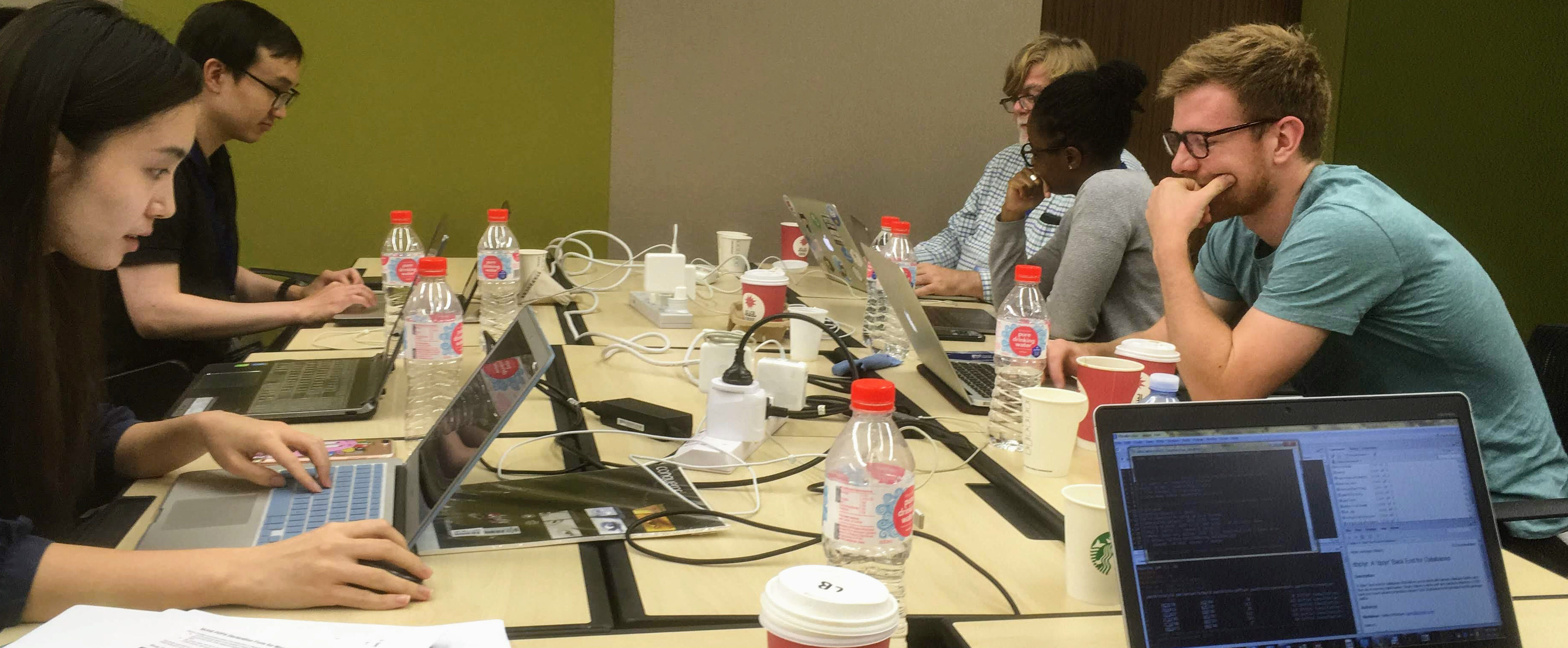Last week I had the privilege to participate in the NUS-NUH-MIT DATATHON and Workshop on applications of AI in healthcare with the UNSW Centre for Big Data Research in Health (CBDRH) team (Tim Churches, Mark Hanly, Oisin Fitzgerald and Oluwadamisola Sotade).
Thu & Fri: Workshop & Talks
In the workshop “Deploying AI Solutions in Real Clinical Practices” by Dr Ngiam Kee Yuan (CTO, NUHS) we discussed
- The large NUHS (National University Health System) databases and their storage structure
- Data security and ownership
- Applications for access to data
- The always changing standards of diagnosis codes (ICD9, ICD10, SNOMED, …) and the problem of matching doctors diagnoses to these codes. In another talk, Hector Yee (@eigenhector) shared some vice ideas on how to use word embeddings as a tool for matching hand-typed diagnoses to ICD10 codes.
- The importance of getting doctors to trust AI algorithms. Hector presented an interesting approach which iterates between an AI algorithm proposing codes and a doctor validating these. The goal is of course to augment the doctors, not to replace them.
Fri - Sun: Datathon
Friday 6pm: Pitching Topics & Forming Teams
23 clinicians pitch topics. We were most interested in a topic presented by Dr Lui Pak Ling (Hematology) and Dr Stella Ang (Anesthesiology) at NUH:
Currently-used statistical models predicting the mortality risk of Intensive Care Unit (ICU) patients assume that the importance of prognostic factors does not vary
Research Database, a large multi-centre critical care database made available by Philips Healthcare in partnership with the MIT Laboratory for Computational Physiology, they investigated whether the importance of prognostic factors varied in the course of each patient’s stay in ICU. Currently-used predictive models assume that they don’t vary.
Currently, the mortality risk of ICU (intensive care unit) patients is assessed based on a collection of variables at the time they are presented to the ICU (the so-called Apache score). This score is assumed to be the same during the whole course of stay in the ICU. Is this assumption appropriate, or does the importance of some prognostic variables in fact change over time?
We joined forces with Siqi Liu, a PhD student at Saw Swee Hock School of Public Health and a member of the organising team for the Datathon who represented our team, and Peng Shen (MOH Holdings Pte Ltd).
All of Saturday: Extracting Data
We used the eICU Collaborative Research Database. The organisers have made the data available via Google’s BigQuery, which was very quick and (almost) 100% reliable. Working in pairs we extracted and cleaned various tables of variables that we used as predictors: comorbidity history, lab results, vitalperiodic and vitalaperiodic, coma score, infusion drugs, dialysis, blood culture, mechanical ventilation, …
We queried the database using
- the BigQuery web interface,
- the Python API and colab notebooks, or
- the dbplyr package in R.
Sunday morning: More wrangling
Joining all the extracted tables into one big table. The final SQL query was 306 lines long and extracted of 161,988 rows (a cohort of sepsis patients) and 93 transformed and cleaned variables (categorical and continuous) from tables with 224 million rows with 4-51 columns.
Sunday 12pm-3pm:
Model fitting
As a baseline, we used logistic regression, with L1 penalty for variable selection (using glmnet in R). Virtually all rows had missing data, so we need to impute by median. This didn’t seem to work out very well, as e.g. the variables picked at after 2 days in ICU had almost nothing in common with the variables picked for 3 or 4 days in ICU.
Gradient Boosting (using catboost in R) seemed to work stably with the irregularly spaced, high-dimensional data with many missing values. In our preliminary analysis, it seems that “age” may increase in importance and “SaO2” (oxygen saturation) may decrease in importance.
Presentation writing:
Teams were judged on a three minute presentation only, and the time limit was strictly enforced (our MC made the audience start clapping after exactly 180 seconds). So the presentation had to be practiced to near perfection, which Dami and Siqi succeeded in doing: The judges placed us first in the track “AI for critical care” 🎉🎉🎉

Work to be continued
So far, we have fitted individual models to each point in time (day1, day2, …, day5). This is of course not the ideal way to deal with a longitudinal signal. One ought to try
The takeaway
Our team is walking away with a preliminary analysis on a cleaned dataset which is likely to result in a publication, and 2 domain experts and 1 other data scientist who are invested in continuing our work. I would say these two days were incredibly well spent!
